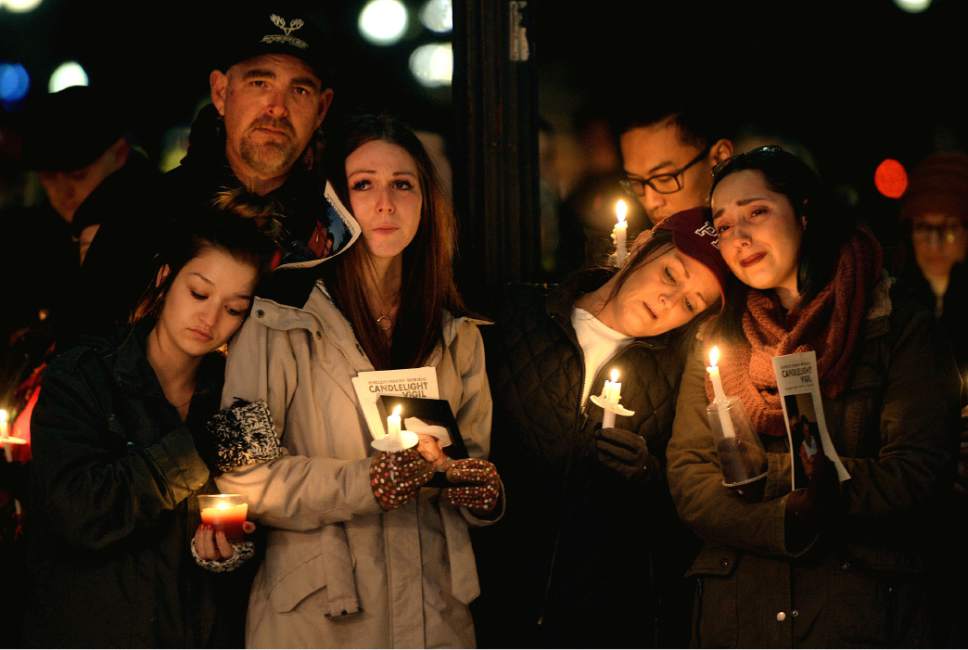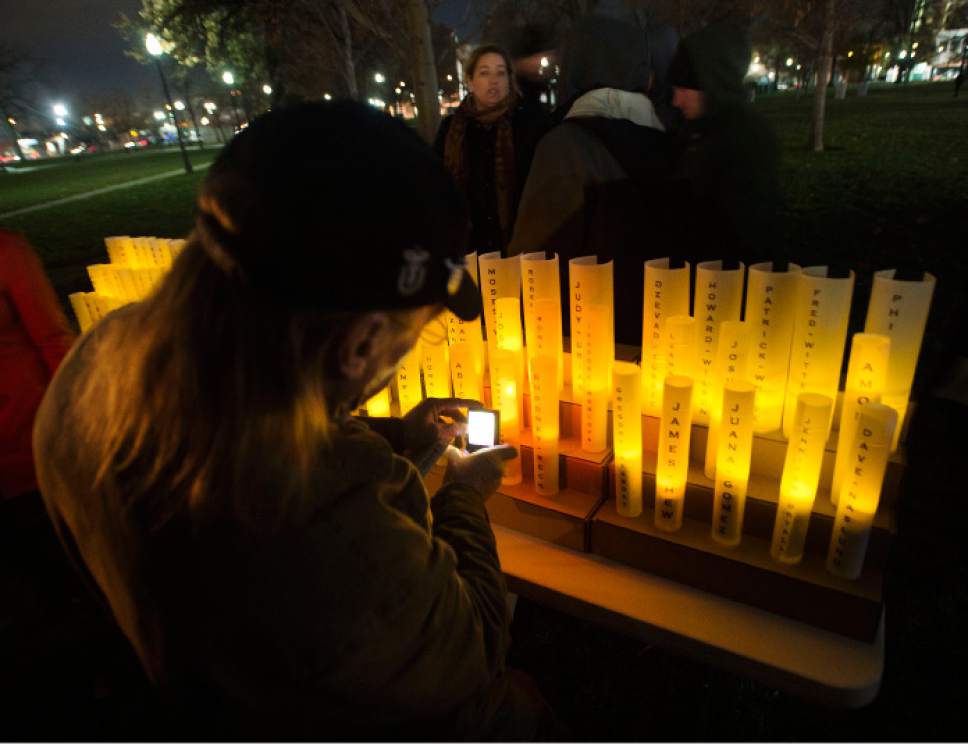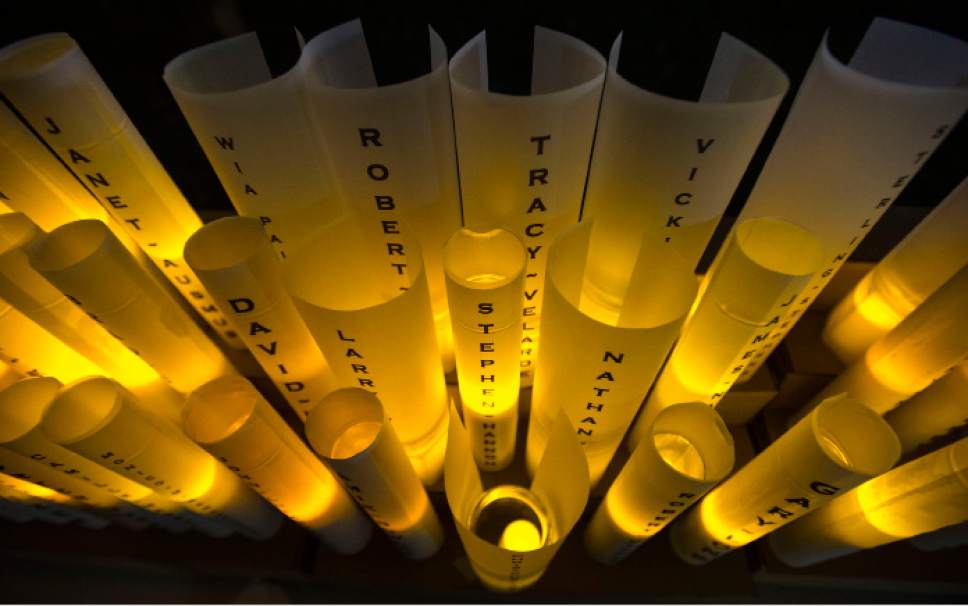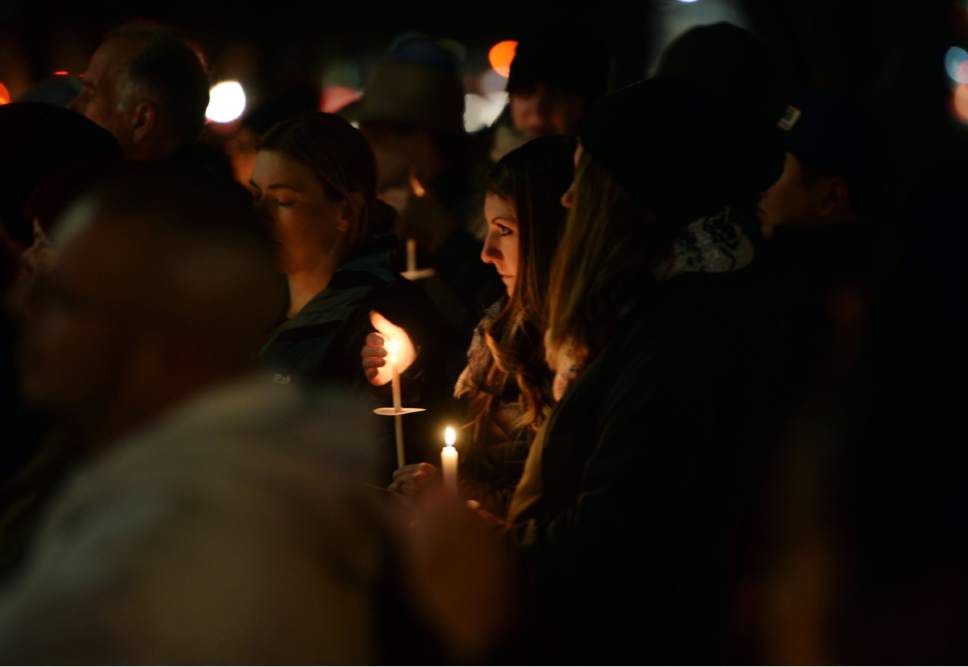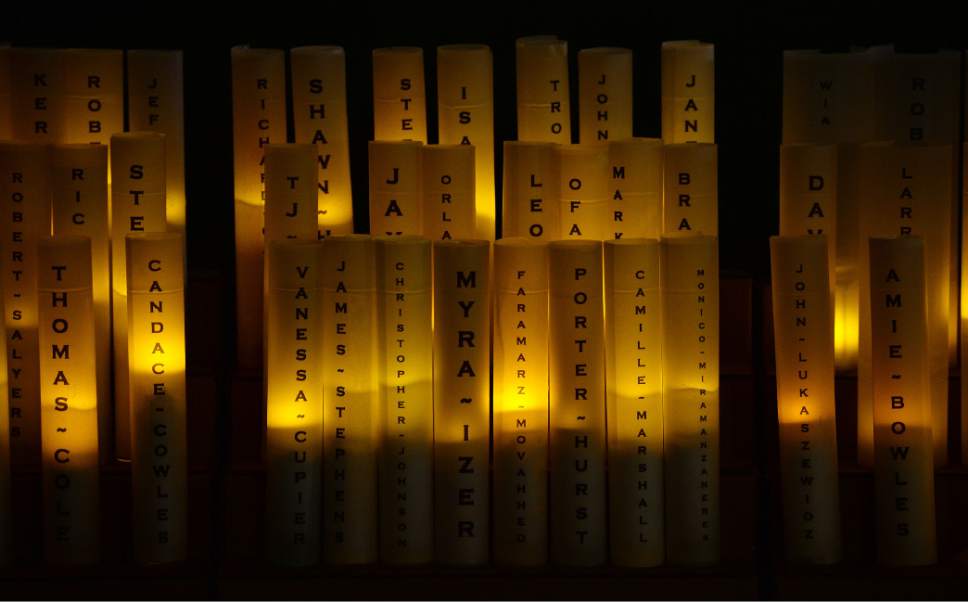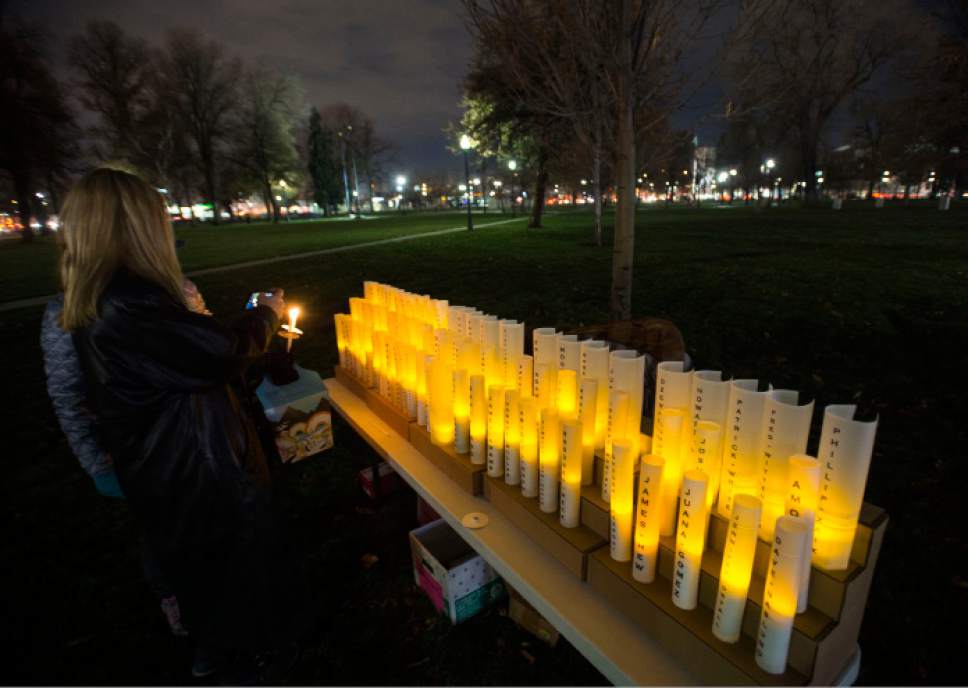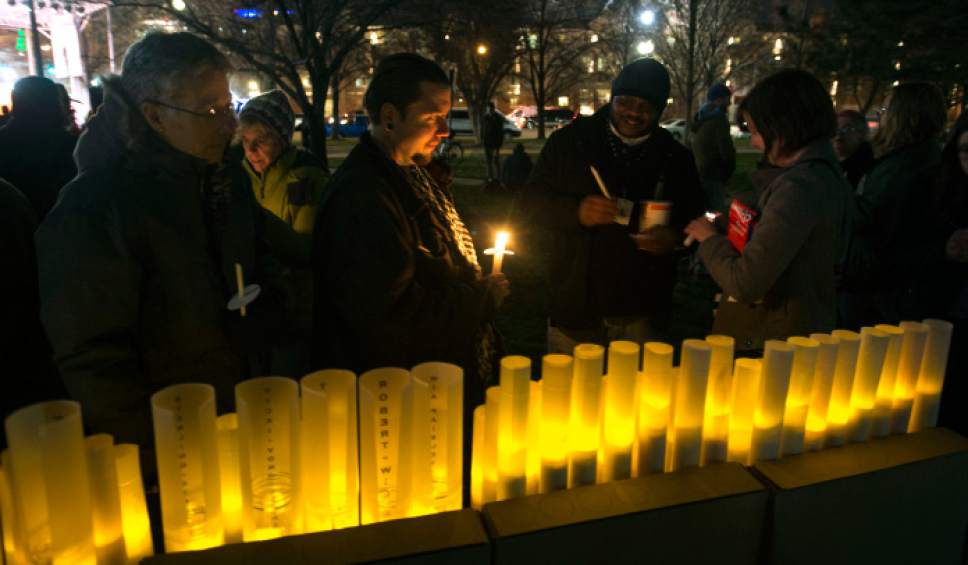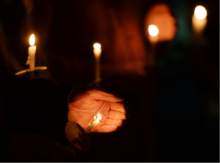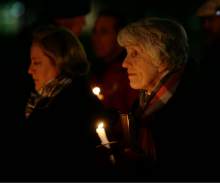This is an archived article that was published on sltrib.com in 2016, and information in the article may be outdated. It is provided only for personal research purposes and may not be reprinted.
Anthony Washington's breath turned into white swirls in the nearly freezing air Tuesday evening. It reminded him of similar cold nights, sleeping under the trees at Pioneer Park.
On a few of those — the ones he'd like to forget — Washington discovered other homeless men frozen to death on the frost-covered grass. He would try to wake them, rolling the bodies that seldom had blankets, but sometimes they didn't respond. There was no longer any steam from their mouths.
"They just died," he muttered, wiping tears from his eyes with his gray knit gloves. "When the police finds them or whoever finds them, it's too late."
Washington, 54, attended a vigil for the homeless people he knew — and some he didn't — who died in Utah over the past year: 44 individuals living on the streets and 53 formerly homeless people who died in care facilities and rapid-rehousing units. Washington held a single white candle that dripped wax onto the sidewalk as he feared a similar ending for himself.
"Most of the names they called, I know them," he said with a grim and toothy frown. "Nobody would help them."
About 70 people attended the event, listening as the names of the dead were called out over a microphone "… Sam Carter … Candace Cowles … Richard Gabriel … Erik Zander." They stood, bundled in coats and scarves, some crying and some hugging, throughout the 30-minute memorial.
An ambulance with its siren blaring drove down 300 South as the vigil began, likely heading toward the Rio Grande District's Road Home homeless shelter, while bells rang at the nearby Holy Trinity Cathedral. Several tarps and sleeping bags lined the west side of the park.
Pamela Atkinson, a community advocate for the homeless, rattled off statistics about the 97 who died: The youngest was 3 months old, 19 were women, five were veterans — the average age of death was 51.
"Homelessness can be absolutely deadly," she told the crowd. "We have to do more."
Atkinson, who often strolls downtown, handing out ponchos, blankets and socks that she stores in the trunk of her car for the homeless, applauded Salt Lake City Mayor Jackie Biskupski and the City Council's announcement Tuesday of four new sites for shelters, saying they will "be conducive to healing."
The centers will also bring about the closure of the Road Home, 210 S. Rio Grande Street, which has been marked in recent months by stabbings, assaults on police officers and burglaries; one community leader says it's under a crisis he likened to violence in Syria.
"For many people, their only knowledge of homelessness is what happens at the Rio Grande — and that will not happen at these sites," Atkinson said. "They certainly don't want to replicate what's been happening down here."
Crystal Willie, 36, has lived at The Road Home for more than a year and attended the vigil Tuesday to remember her "street brother" Lester Dewey. He'd been living as a vagabond in Utah for about seven months, she said, before he was hit and killed by a car last week in Sugar House.
"It's not all right," Willie said.
Washington also knew Dewey and hugged Willie after the event to console her. The two stood next to the stage, reminiscing about Dewey's laugh and trading stories about his life. As they talked, Washington pulled his coat tighter around his neck, tugging on the three other jackets under it and wobbling the sunglasses atop his head.
After a four-year military stint that included a tour in Iraq, Washington has been homeless for the past 15 years, blaming his situation mostly on an alcohol dependence. If you ask where he lives, he just points to the sky.
Washington left his candle on the cold ground to burn out, the flame slowly dying as he walked away to find a place to sleep for the night.
ctanner@sltrib.com
Twitter: @CourtneyLTanner


